
Where We Go
The Secret Serra
Introducing Brazil’s majestic, unheralded Serra do Espinhaço
2025/26
For our inaugural Collection of trips at GOGO, Elisa & I wanted to share the Story of Brazil—the incredible, untold version that we fell in love with, about gracious people & bucolic backroads; Atlantic Rainforest & high savannah; colonialism & slavery, rural & urban ways of life, and strikingly diverse socio-economic conditions.
The Serra do Espinhaço Meridional (the geomorphological name for the rocky mountains surrounding Diamantina, in the state of Minas Gerais) gave us everything we needed—and more—in a single, majestic 1200 x 60 km swath.
Once the epicenter of the global diamond trade, the Espinhaço was abandoned and largely forgotten by the outside world for nearly two centuries.
Today, it’s on the cusp of being recognized as one of the most spectacular places on earth.

trailhead, Sempre Vivas National Park Serra do Espinhaço
By the numbers
- 3 UNESCO Designations
- 2 Biodiversity Hotspots (Atlantic Rainforest & Cerrado)
- 19 Conservation Units
- 3,000+ species of plants (estimated)
- 7% of Brazil’s total biodiversity*
- 1,200 km² (roughly the size of the countries of Vanuatu, Montenegro, or the Bahamas)
* Brazil is the most biodiverse country on earth
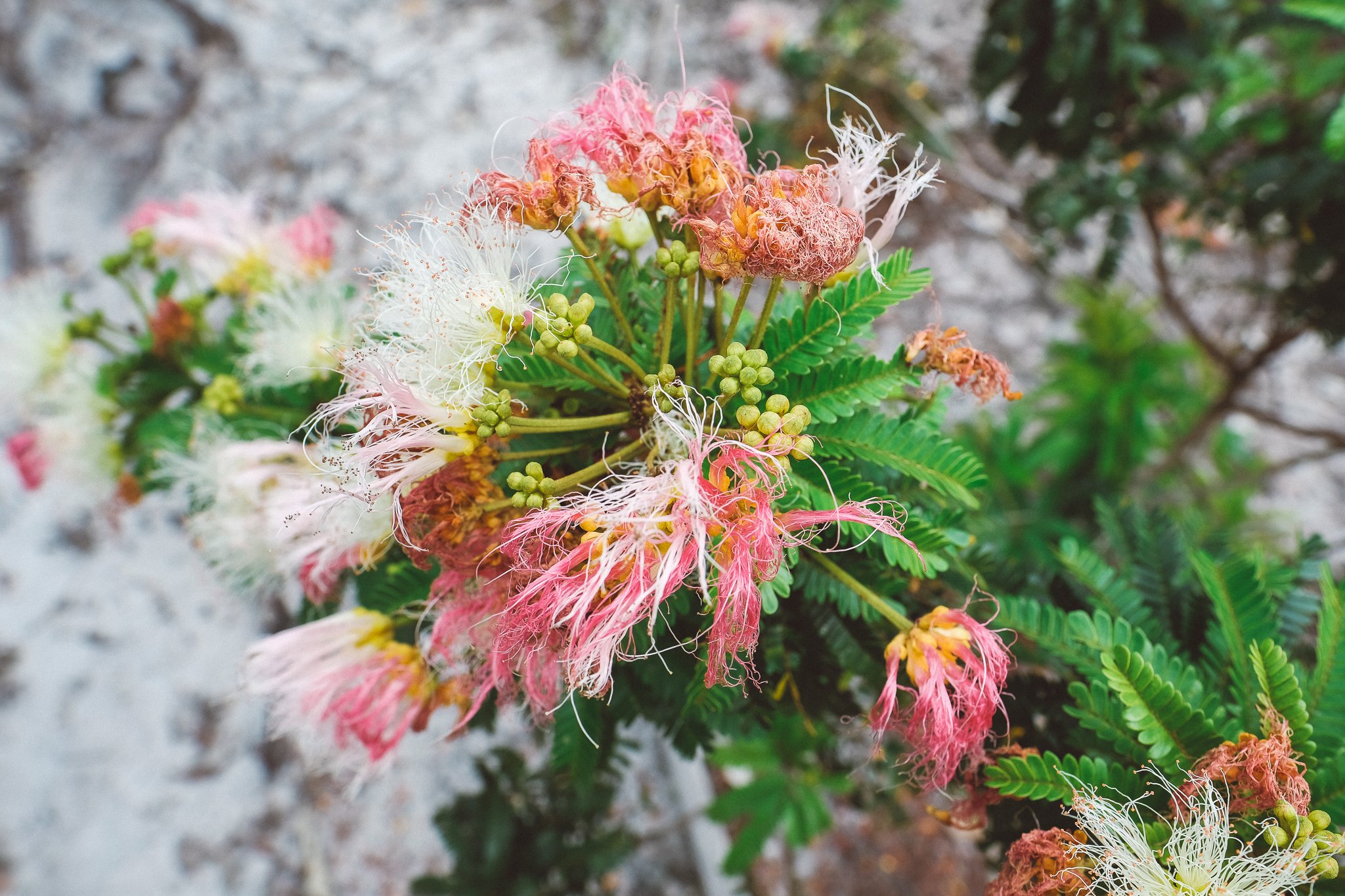
Wildflower in October
The Garden
It’s difficult to overstate just how rich the Espinhaço is in terms of biodiversity. Brazil is the planet’s most biodiverse country, and the range as a whole is thought to contain over 7% of its species (30% of which are endemic; 350 of which are considered threatened), while accounting for less than 1% of national territory.
Sadly, the Cerrado (one of the 2 larger terrestrial biomes to call the Espinhaço Meridional home) is being deforested at a rate more than double that of the Amazon, and has experienced a pronounced decline in rainfall during recent decades.
It’s a privilege to be able to experience it while it’s here, like this, right now.
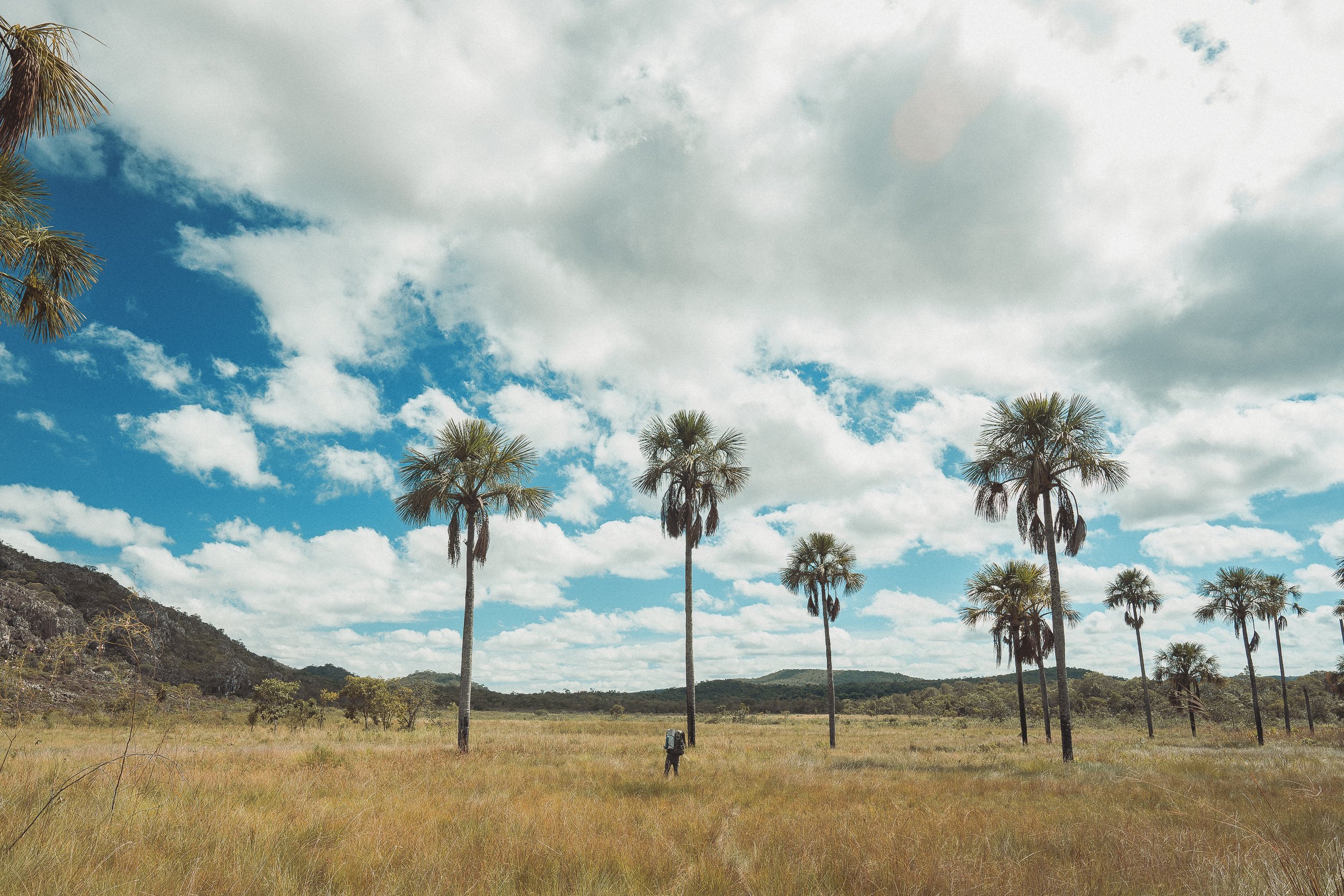
Vereda, Sempre Vivas NP
The Mosaic
An unfathomably large (New Jersey-sized) swath of protected wonderland gushing with green mountain vistas, white sand waterfalls, cola-colored rivers, one of the highest concentrations of species endemism on the planet, and a tantalizing lost network of historic trails… with virtually no tourism.
Welcome to the spectacular, undiscovered Mosaic of the Espinhaço: 19 adjacent conservation units—and growing—including one spectacular National Park, 3 State Parks, and buffer regions totaling 5,000,000 acres of Cerrado (Brazilian Savannah) & Mata Atlântica (Atlantic Rainforest), with little to no tourism infrastructure.
For lovers of nature, culture, history, outdoor sports, and (let’s just say it) life itself, this is the stuff of dreams.
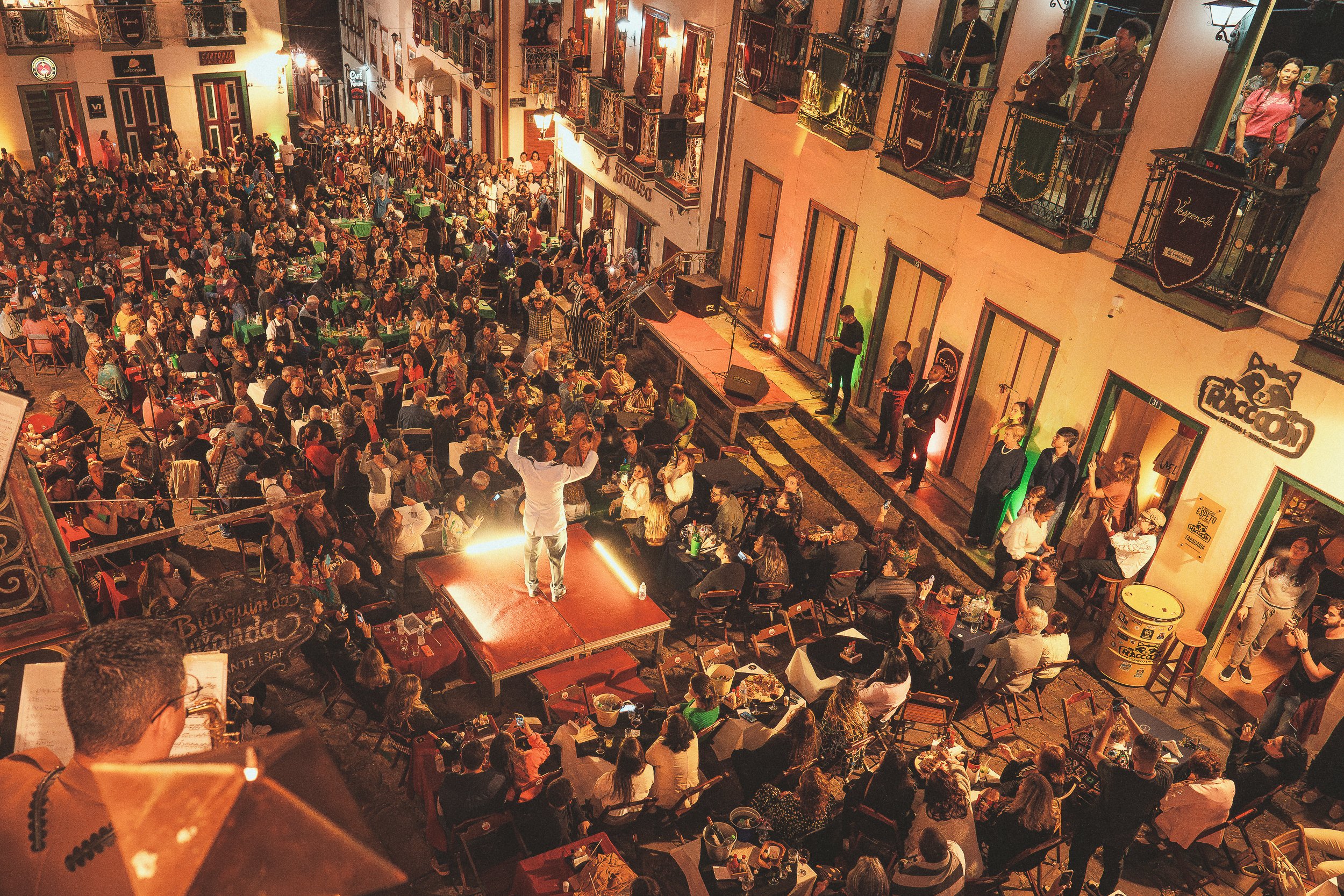
vesperata! Diamantina
UNESCO WOrld Heritage City Diamantina
UNESCO World Heritage City; Terminus of the fabled Estrada Real; Bastion of Portuguese colonial architecture; former diamond-mining capital of the world; and shining exemplar of the “diamond in the rough” cliché. Somehow, little Diamantina (pop. 49,500) manages to be all this and more (burgeoning college town; “musical city of Minas”; hometown of Juscelino Kubisheck and Chica da Silva; etc.), while remaining virtually undiscovered even by mineiros.
Add it all up, and you have a bonafide world traveler’s dream: a tourist mecca without tourists, smack in the middle of one of the most enchanting settings on earth.
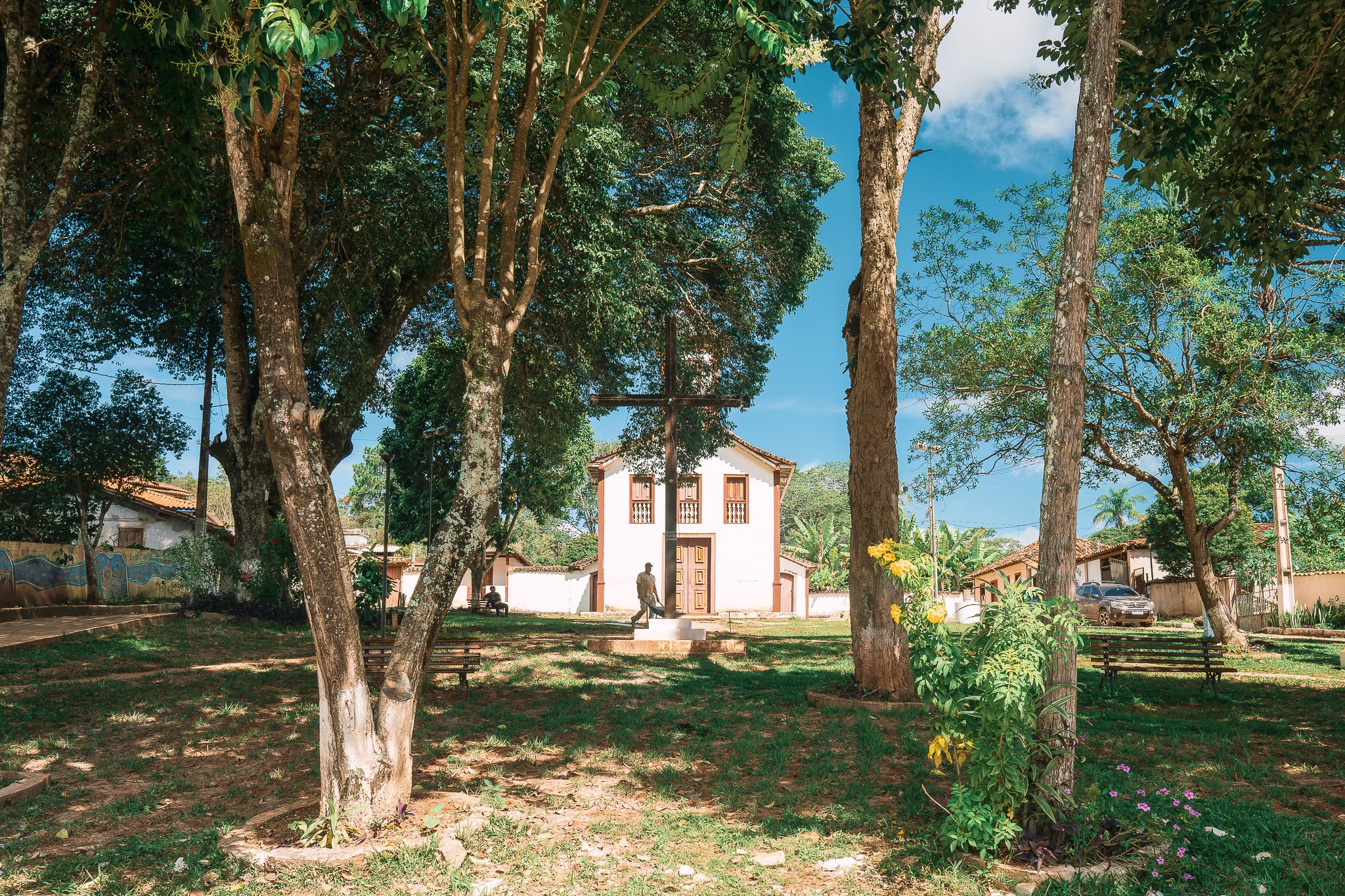
Street Scene, São Gonçalo do Rio das Pedras
Colonial-era Villages
If it seems like every other community in the Espinhaço is a bucolic colonial-era mining hamlet, your math isn’t too far off. From elegant São Gonçalo do Rio das Pedras to rustic Inhai; postcard-perfect Capão Maravilha to forlorn São João da Chapada; festive Milho Verde to somber Mendanha, the region is chock full of storied mountain settlements, yet each manages to feel unique, secret, and compelling.
There’s magic in the air in these communities, and the locals know it. Few places are capable of bringing travelers into the enchantment of the Espinhaço quicker.
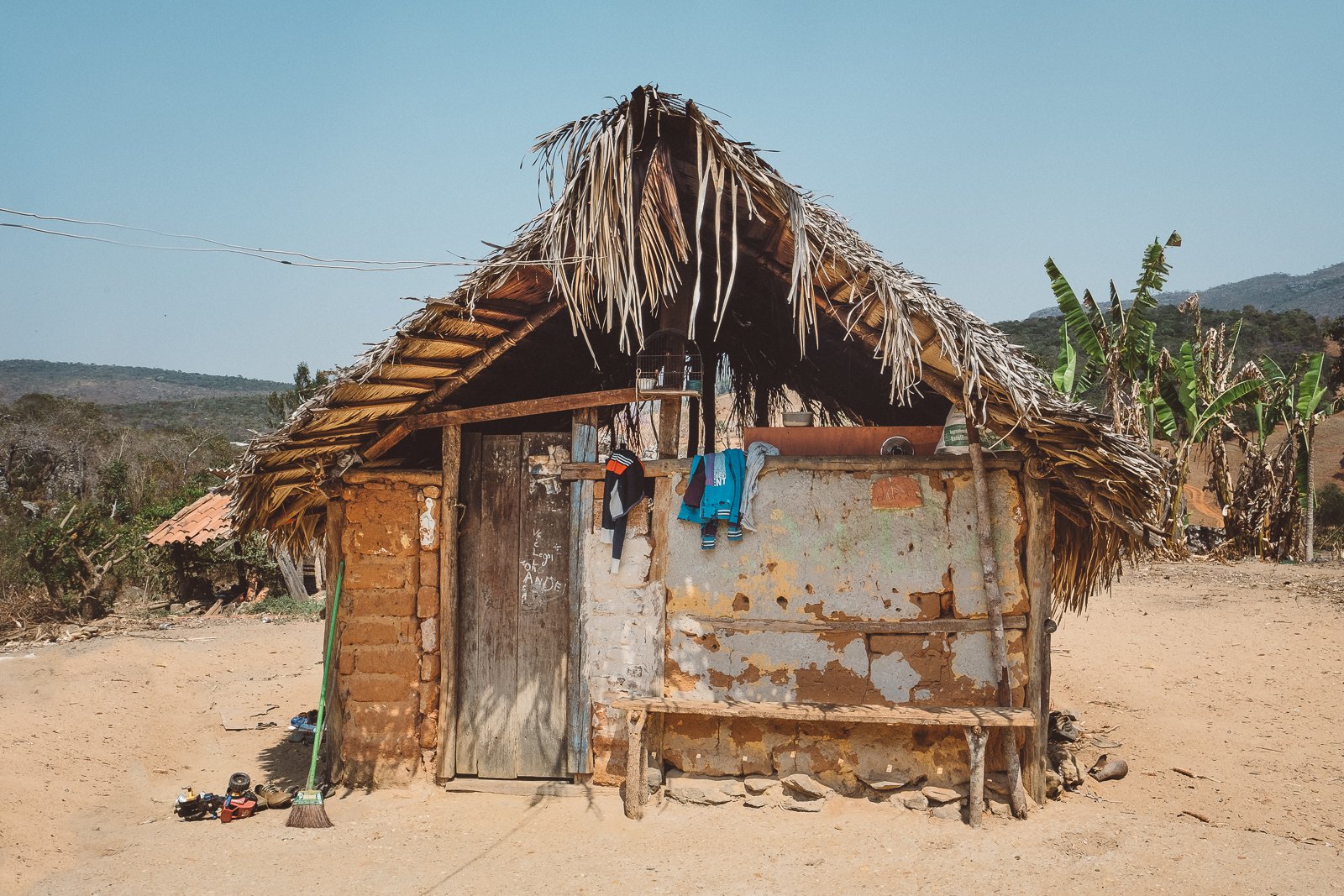
Guesthouse, Quarteis do Indaia
Quilombola Communities
The discovery of diamonds in the Serra do Espinhaço directly and dramatically impacted not only the fortunes of Europe, but of Africa. Quilombos & quilombola communities—semi-autonomous backcountry settlements founded by former slaves prior to the 19th century—bear witness.
The Jequitinhonha River Valley (the mesoregion where the Espinhaço lies) is home to more than 80 quilombola communities, dozens of which dot the landscape around Diamantina. Modest, unhurried, and near-universally backdropped by stunning scenery (not coincidentally; founders were often rural workers on remote ranches, or former slaves who sought to relocate far from society), they provide an unforgettable glimpse into the diverse cultural landscape of both the Espinhaço and Brazil, at large.
Few accommodations are as enriching or memorable as a homestay in a quilombola community. It’s a privilege and a pleasure to be able to experience these places, and to break bread with the folks who inhabit them.
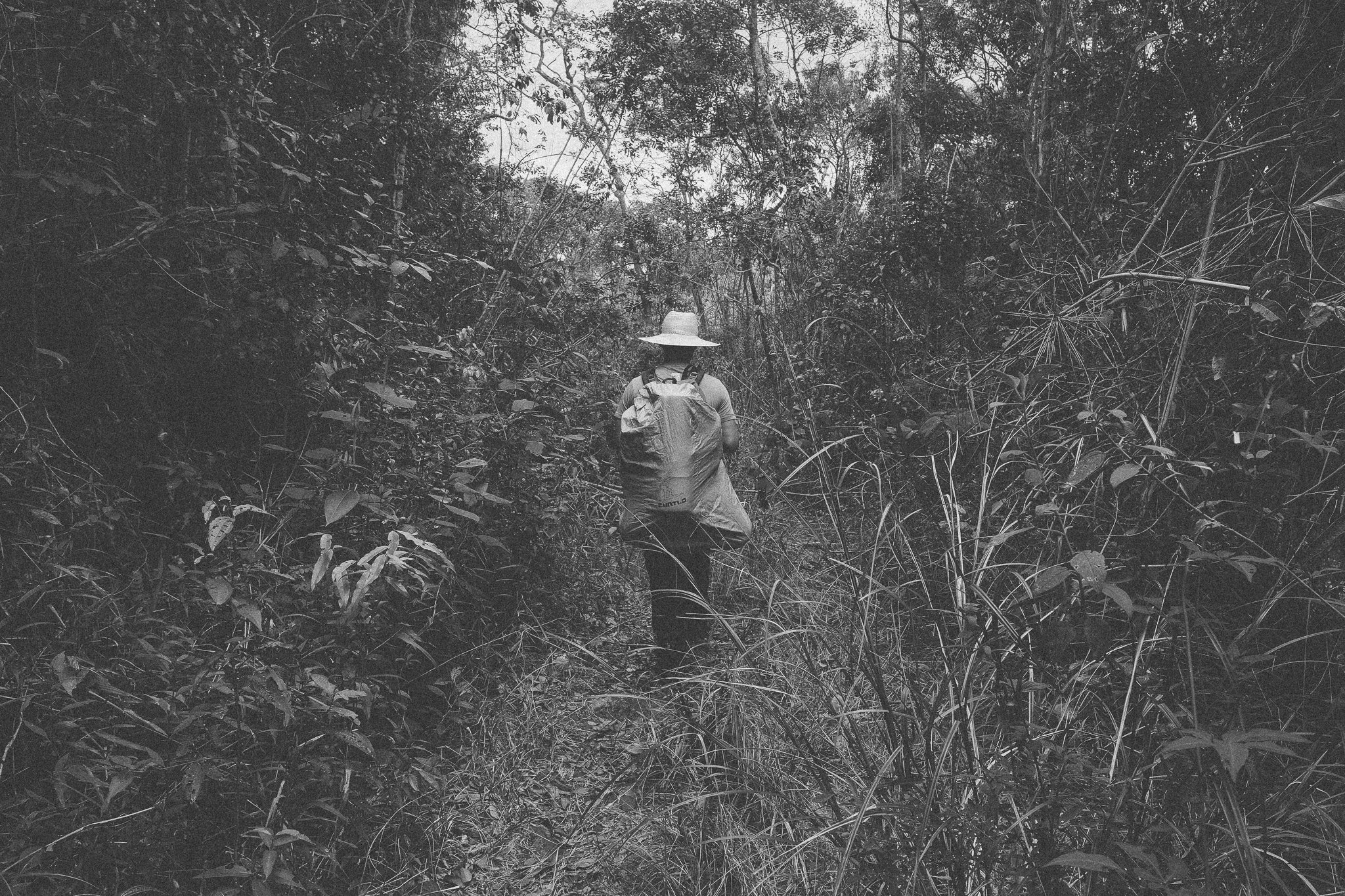
On The trail, Sempre Vivas National Park
Sempre Vivas National PArk
Larger than Greater Los Angeles, with just a handful of residents (3, by our last count), a few dozen visitors per year (64 in 2022), thousands of endemic species, and no infrastructure to speak of, Sempre Vivas National Park is, without exaggeration, one of the wildest & most fascinating places in Brazil.
From the lush palm groves of the untamed eastern borderlands to the wind-swept campos of the west and the secluded flower-strewn gardens in between, Sempre Vivas is truly a universe unto itself; a labyrinth of nameless peaks, overgrown trails, and exuberant high savannah vegetation.
Should we decide to cross the Park during your trip, you should expect long days of bushwhacking, canoeing, and/or off-roading, and unforgettable evenings in rock shelters, makeshift flower-picker shelters, and hauntingly isolated ranches. Pointy grasses, ticks, snakes (including several deadly species), and lack of shade are harsh realities of the trail here—as are large felines.
Few places on earth manage to feel this magical, this wild, and this overlooked.
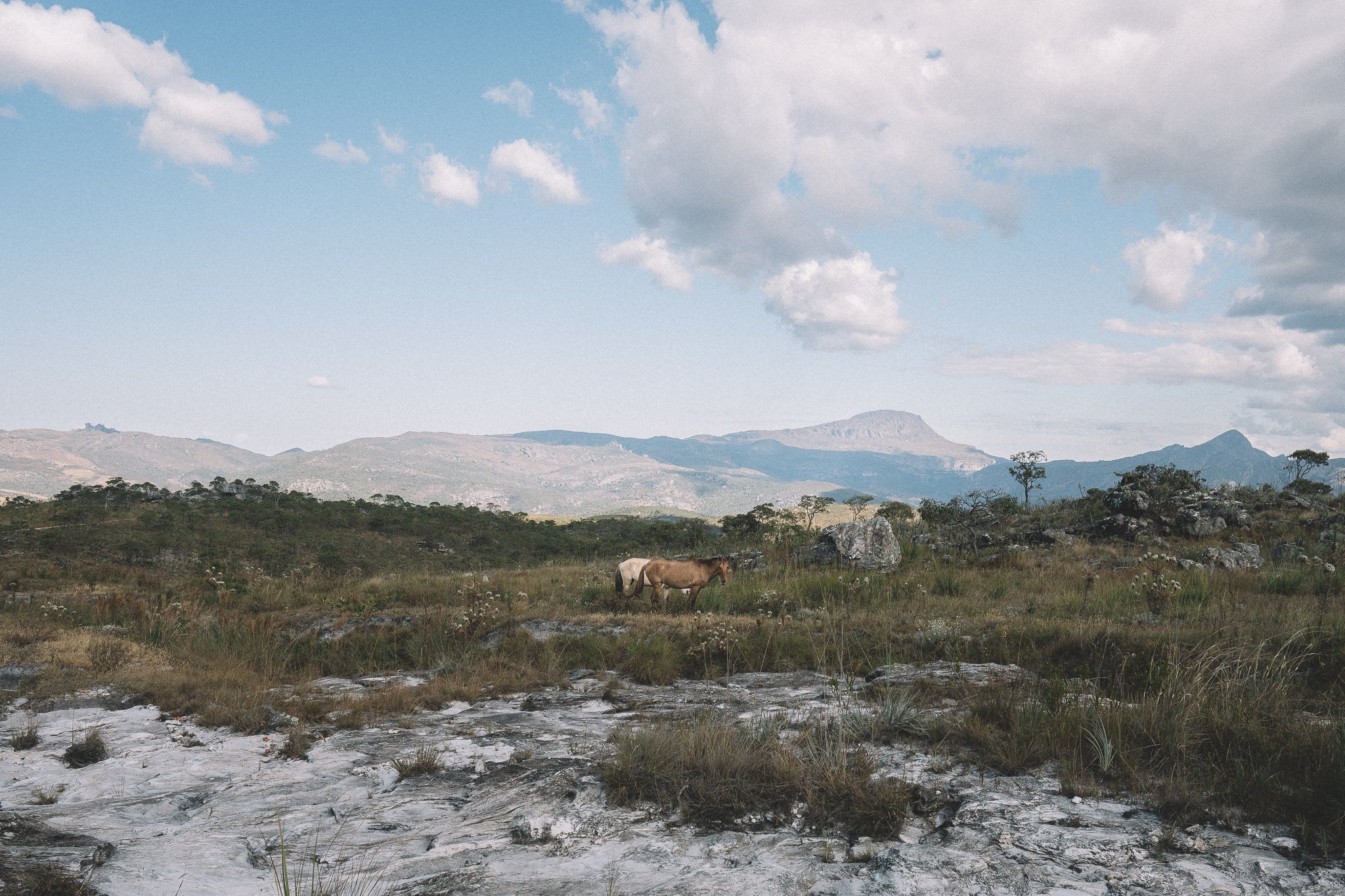
View of Itambé from the Chapada do Couto
Pico do Itambé
The region’s undisputed icon, Pico do Itambé (elev. 2,052 m) towers over the region like a citadel, living up to its billing as “the roof of the Espinhaço”. Protruding over 1,102 meters over the surrounding peaks, it draws a hard line between the Rio Jequitinhonha & Rio Doce river basins, and a soft line between the Atlantic Rainforest & Cerrado biomes.
Taking in the view from atop after a challenging climb is one of the most satisfying & memorable moments to be had anywhere in the Espinhaço, rivaled only by a golden hour descent.
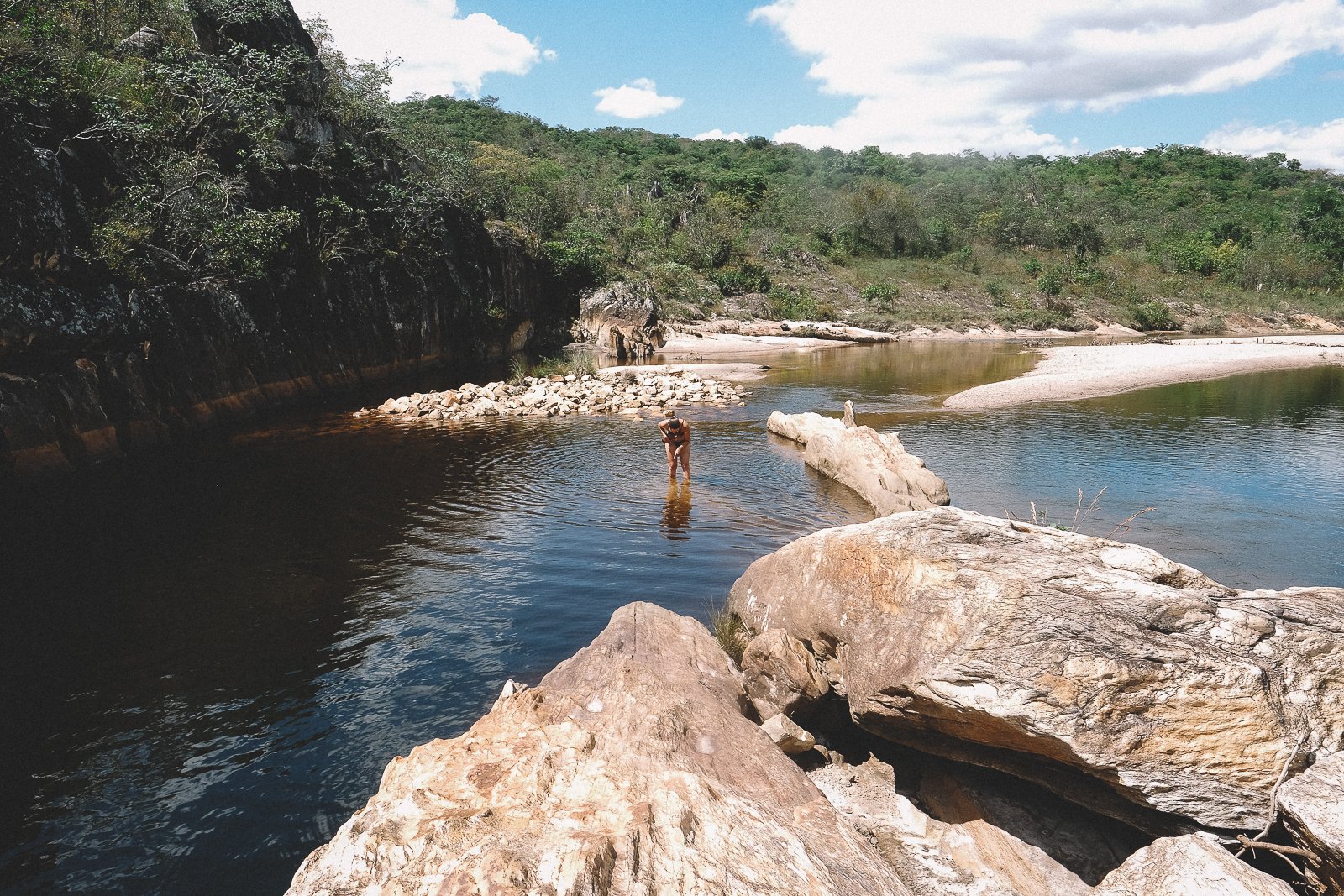
Rock Quarry-turned-swimming hole
Agua… Everywhere
The waterfalls (rightfully) steal the scene, but agua pulsates everywhere—and permeates everything—in the Espinhaço. From crystalline streams, bright emerald lagoons, and cola-colored rivers, to palm-strewn wetlands, flowery bogs, and even oasis-like “hot” springs, the region wouldn’t be the natural paradise it is were it not for the pristine water coursing below & across its landscapes.
Three of Brazil’s most important rivers, the Rio São Francisco, Rio Jequitinhonha, and Rio Doce, take shape here, with the latter two springing forth from the Espinhaço’s high plateaus.

The Jequitinhonha River, scarred But Beautiful.
The Jequitinhonha River
The peaks & Parks get more glory, but nothing shaped this region or brought more fortune & glory more than the rivers that run through it, and none more so than the Jequitinhonha. Solemn yet dignified even after centuries of callous abuse, the river’s crystalline waters once ran rich enough with gemstones to both buoy a distant Empire and cradle a young nation. Today, irreparably scarred & forgotten, it remains forgiving enough to provide an economic lifeline for some 500,000 Brazilians living downstream.

The Waterfall of Lost Time
Waterfalls
Take it from us: Attempting to count the waterfalls of the Espinhaço is an exercise in futility. Just as futile: trying to spend consecutive days on the trail without bathing in one.
We typically cross paths with at least one named falls per day (and sometimes many more) during our trips, from soothing cascades to show-stopping masterpieces, and everything in between.
“Ice-cold” has never felt so good.
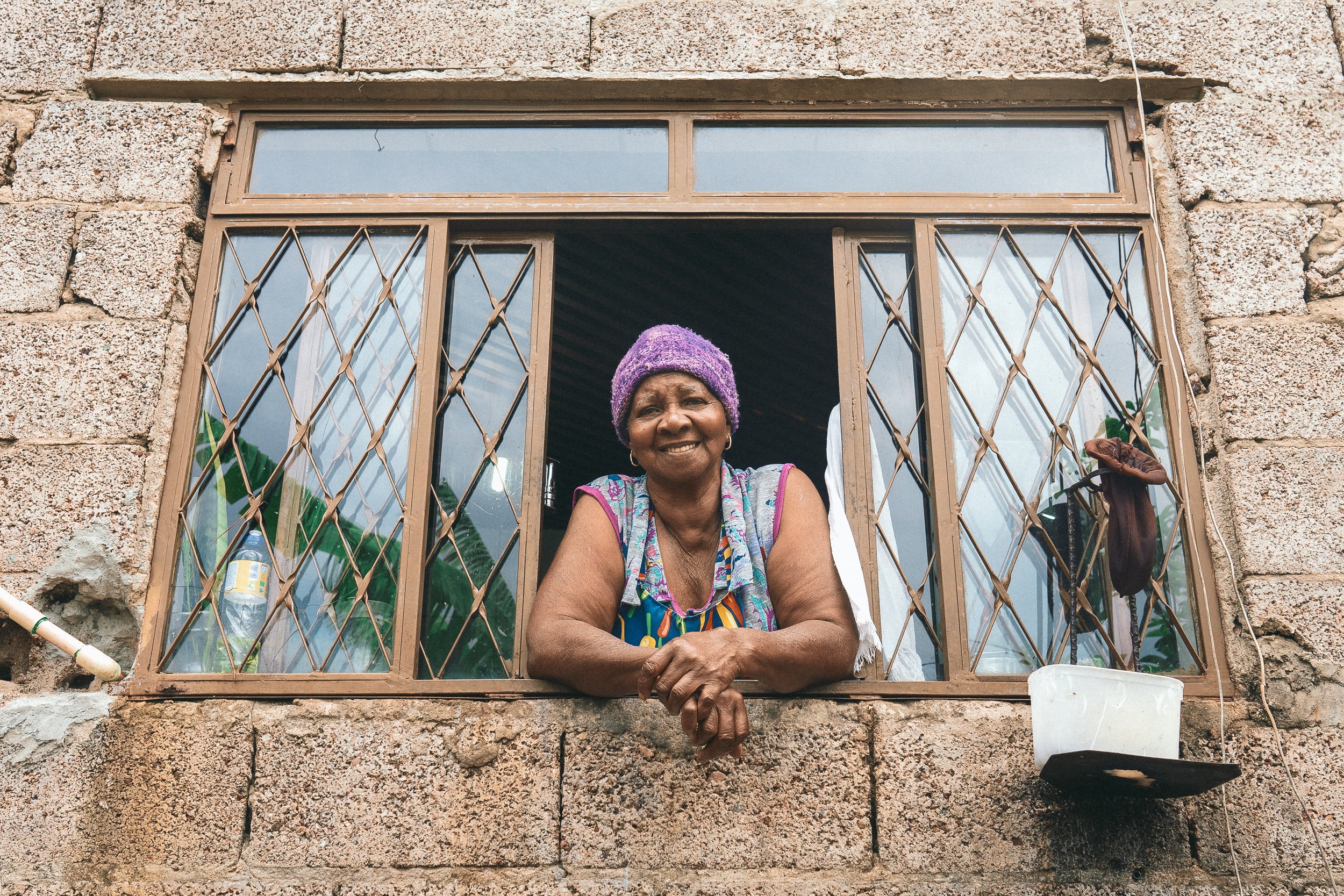
Dona Maria, São João
Mineiros
Minas Gerais is Brazil’s heartland, and Mineiros (the state’s denizens) play the part of heartland hosts to a “T”. Easy-going, down-to-earth, and famously chatty, with a well-documented love of food (especially comida mineira, of course) & drink (some of Brazil’s best cachaça & craft brews come from Minas), mineiros are to “friendly” what paulistas (residents of São Paulo) are to “fast-paced” and cariocas (folks from Rio) are to “care-free”.
While we don’t usually come across too many humans during our trips, there’s an outstanding chance that the ones you do meet will be Mineiros. You won’t find a kinder or more welcoming bunch anywhere in Brazil.
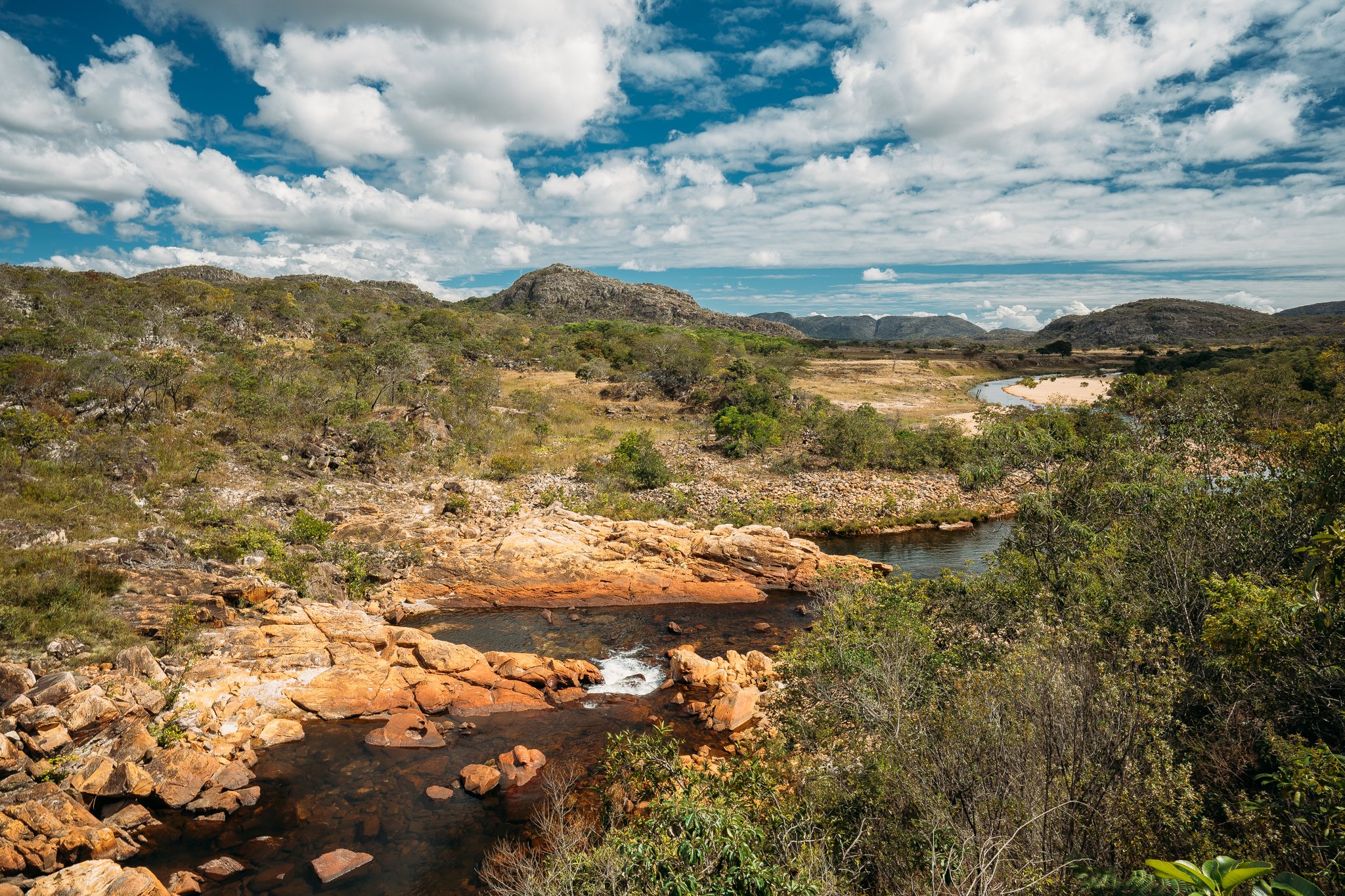
View of the Rio Pardo Pequeno, from the pontilhão.
The Green Line
A series of tiny settlements that time forgot, strung along an old railway that cuts through lush mountain vegetation. From dusty, rough-around-the-edges (but only the edges) Conselheiro Mata (pop. 200) to picturesque Mendes (pop. 2) and serene Barão de Guaicui (pop. 50), this microregion’s unique—and uniquely diverse—residents, crystal-rich inselbergs, fertile soil, and location halfway between Diamantina & the lowlands to its west make for a fascinating case study in regional cultural identity: nowhere else do ambitious miners, idealistic mystics, hardened flower-pickers, and rowdy cowboys unite with such conviction.
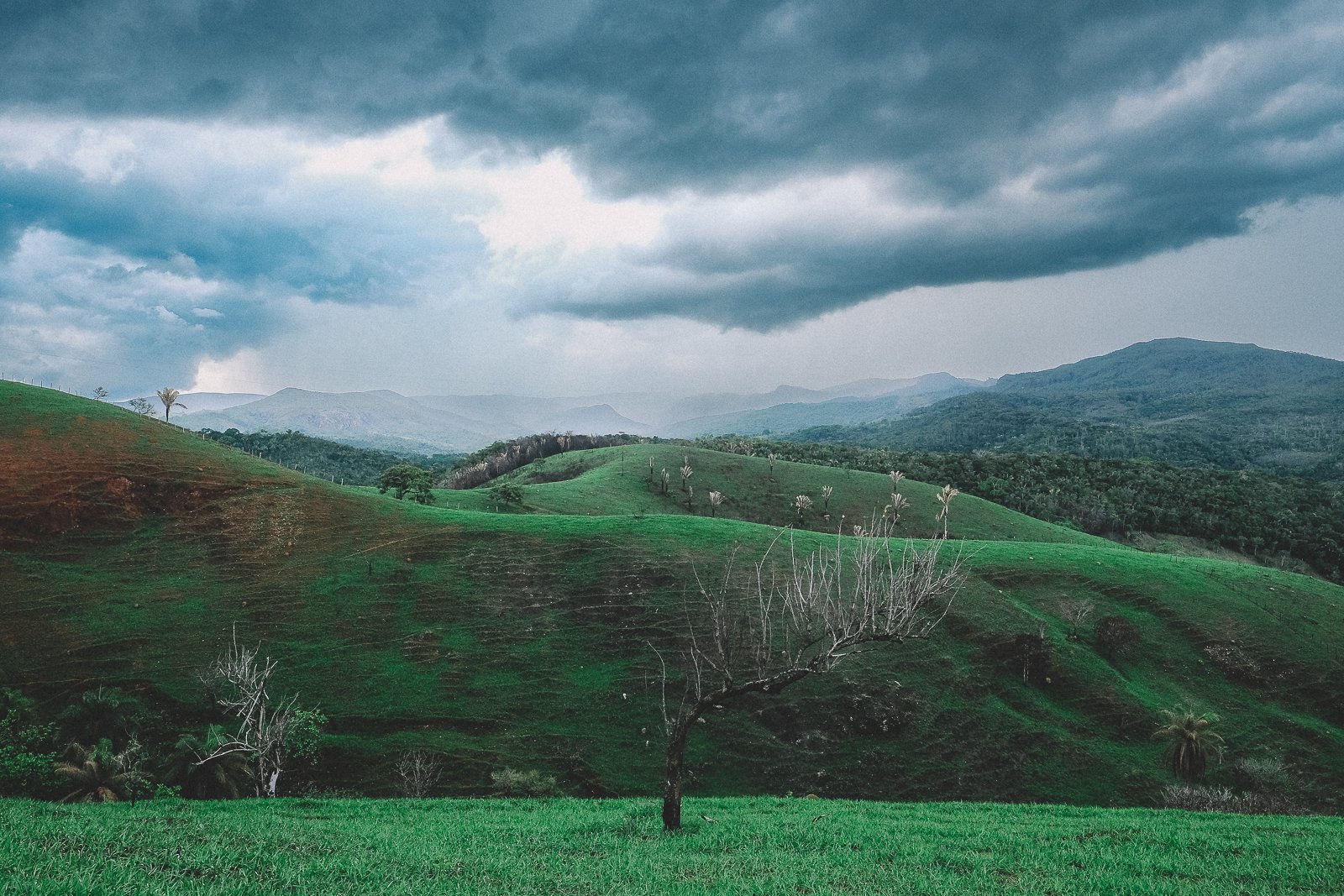
Spring Scene, Near Conceição do Mato Dentro
Bonafide Mountain Weather
Situated inland primarily between 1,000 - 1,600 meters (about 3,250 - 5,280 ft) above sea level, the Espinhaço has some of the most temperate, pleasant weather in Brazil, and the occurrence of 4 relatively distinct seasons means there’s an ideal time for just about all types of travelers.
The summer storms typically tapers off in March, making April & May two of the most beautiful months to explore the region: gushing waterfalls, exuberant vegetation, plentiful springs, and crossable rivers.
June & July are mild & dry, with near-perfect hiking conditions: warm, sunny days and crisp, cool mountain weather in the evenings, with hardly a cloud in the sky.
The dry winter reaches its zenith in late August to September, making both months wonderful for exploring the region by foot: the savannah landscape is parched, dotted by colorful bouquets of flowers & cactus fruit, with gently-flowing waterfalls & easily crossable rivers.
October & November are unpredictable, but beautiful: the Cerrado is in full bloom, with daily storms creating wet & wild trail conditions and turning the landscape a thousand shades of green.
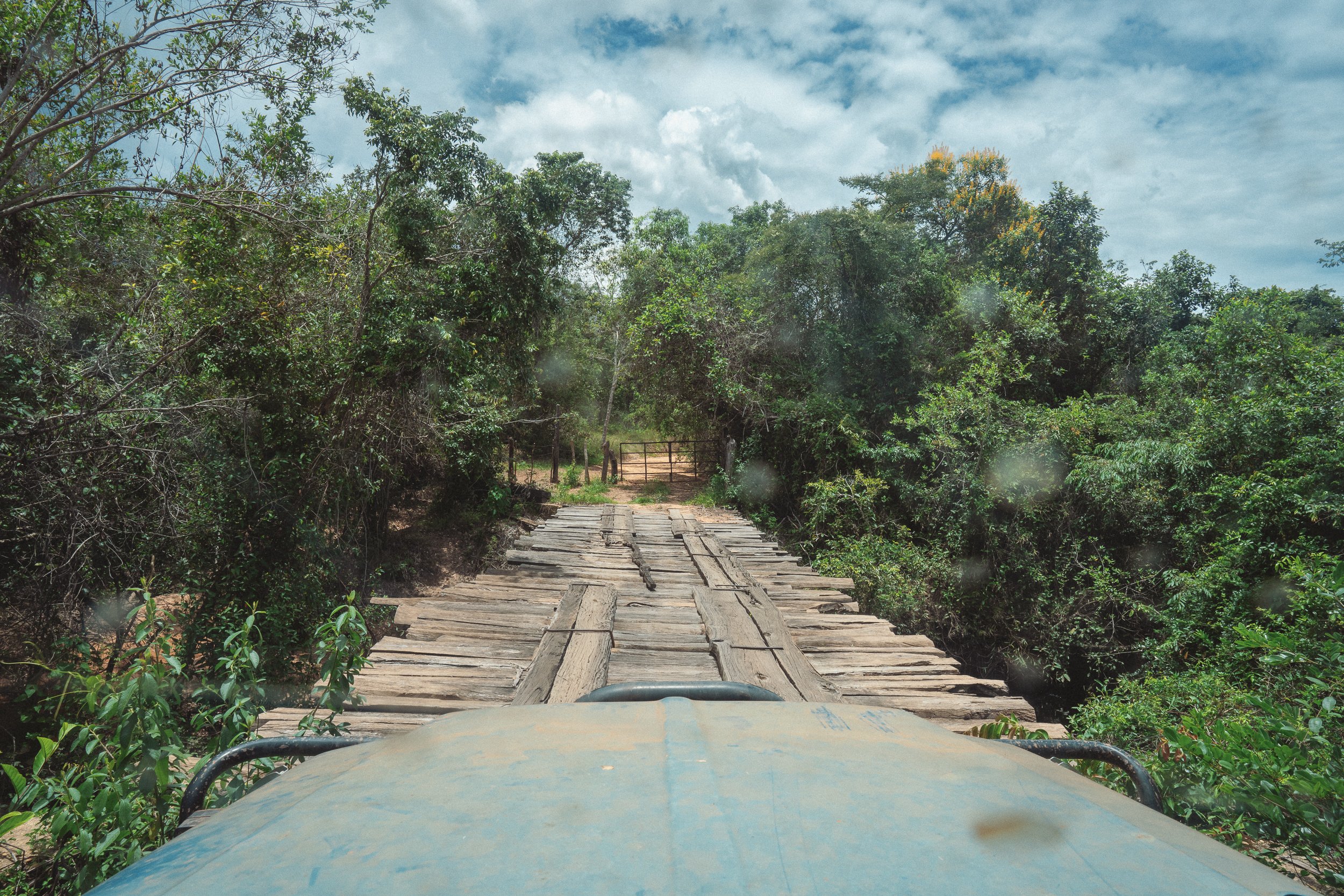
EAstern Entrance, Sempre Vivas National Park.
Trips Into the Story of Brazil
From deeply immersive private journeys for adventurous solo & duo travelers, to ambitious small group expeditions and (new in 2025) bespoke treks, horseback rides, and overland tours.
Our trips aren’t for everyone, but if you’ve read this far, they might be for you.








